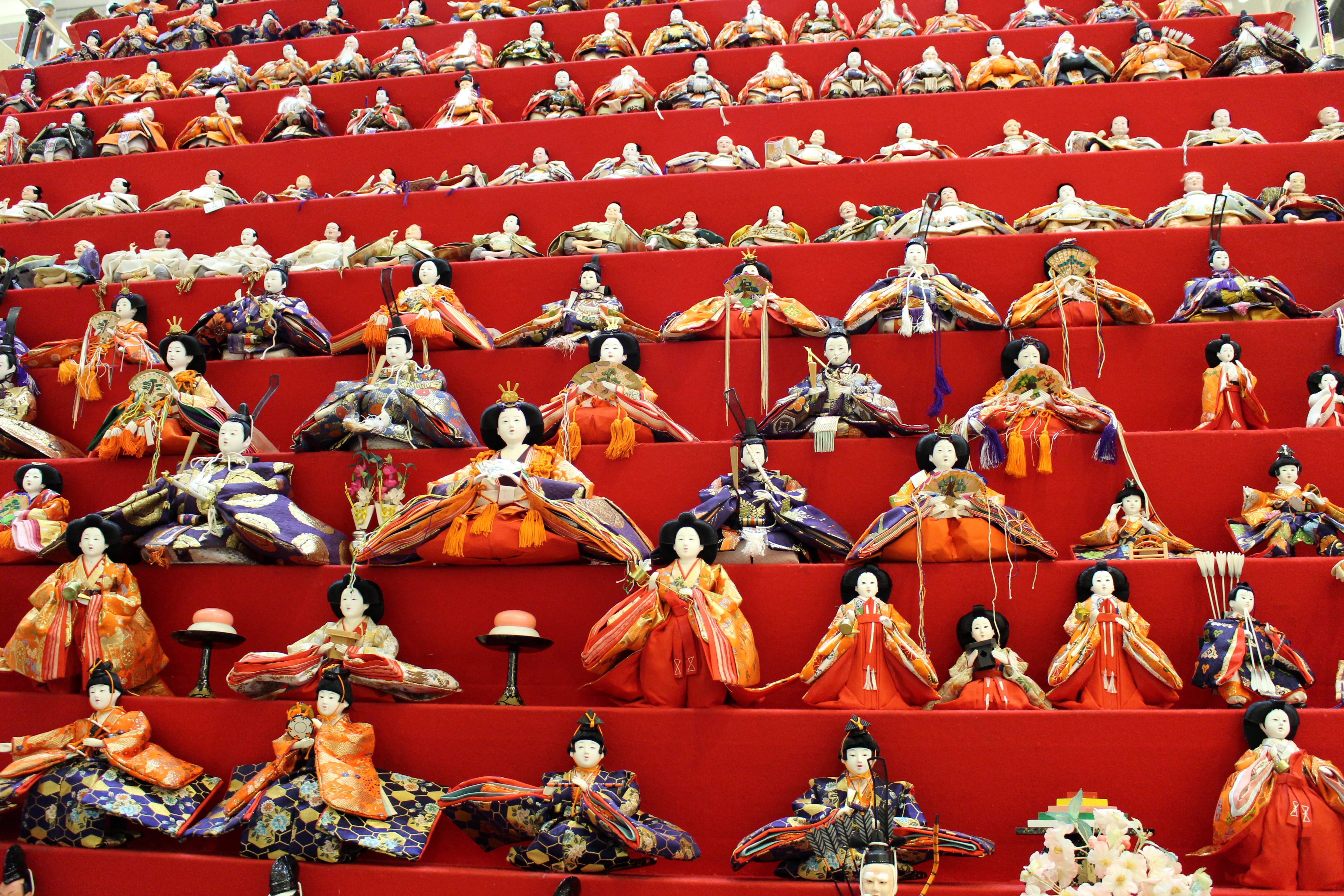Dolly Koghar talks about how we are all same to same under our thin exteriors.
Playing with dolls is natural to almost every girl, and girls in the Land of the Rising Sun were no exception. In Japan, the 3rd of March is celebrated as Doll’s Festival Day or Hinamatsuri, or Girls’ Day. So, I too, dressed my (then) lil’ tot in a red-and-gold brocade kimono and joined the throngs and headed to a well-known, nearby, Shinto Shrine, to ring the Suzu bell for her prosperity and health. We then headed to Daimaru, to admire the Hina-ningyo, which is an elaborate display of ornamental dolls on a seven-tiered platform covered in red material. The figurines representing the Emperor, Empress, attendants, and musicians are dressed in the opulent, traditional court dresses of the Heian period (794-1185 AD). However, it was well into the Edo period (1603-1867) before the matsuri (festival) became firmly entrenched into the Japanese calendar; after Princess Oki-ko who loved doing hina-asobi (doll-play), became Empress Meisho in 1687.
Although Hinamatsuri artistically reflects Japanese hopes and values, and fosters respect for the ceremonial figureheads on the throne, unfortunately, it’s nigh- impossible for the common man to own these pricey, exquisitely-handcrafted figurines; nor to afford the space to exhibit or store them, with the exception of departmental stores and some very affluent and big homes that have them as heirlooms!

When I left Japan in ’95, way up in the Northern Hemisphere and frigidly cold, with its light-skinned and small-built people; and moved to Bangalore, I thought I’d seen the last of doll displays. But to my surprise, there, way down south of the equator, where it was blazing hot and the denizens were dark and sturdy-built, I discovered yet another ‘Dolls’ Festival’, but with a desi twist.
The doll-display festival there is during Navratri, a nine-day religious festival in October celebrating goddess Durga vanquishing the demon Mahishasura. It’s called Gombe Habba in Bangalore, Karnataka, or Golu or Kolu in Tamil Nadu, and Bomma Koluvu in the other two Telugu-speaking Southern Indian states. But like anything and everything Bhartiya (Indian), the display has absolutely no semblance of the orderliness and deadpan dignity of the Hinamatsuri. Although the base here is also a steps-stand, the display is a riot of colours and shapes and sizes; eclectic, hotch-potch acquirements of the family over decades or even centuries. There are the brass and bronze statuettes of devis and devas; and of saints and deities of any and every religion in varying materials. On the lowest rung, there’s the gaily-painted and imperfect but alive assortment of clay and wooden human figures with their tools of trade, aspiring for the divinity on the top. Sab chalae ga –everything goes; even a Mickey Mouse and Spider-Man join the gods! There’s fun in chaos!
I attended the festival dolled up in my silk sari and gold finery with the indispensable jasmine string in my bun, without which dressing-up isn’t quite complete in the South, and the experience stays with me as a delightful reminder of the regions’ humility, courtesy, hospitality, and their artistic talents. I tasted my host family’s version of the festival’s signature dishes and saw my host’s creativity in setting up her amassed figures, and additional handmade ones. I was dumbstruck by her exceptional rangoli, which are intricate floor decorations drawn by sprinkling multi-hued powders at the entrance; an art every South Indian lady excels in. We married ladies had vermillion powder or kumkum applied on our foreheads, and ateprasadam; a sweetmeat first offered to the deities. We left with the typical auspicious South Indian gift of betel leaves, a dried whole coconut, a few glass bangles, and the ever-visible jasmine string. We Indians truly have an incredibly rich and colourful history and cultural heritage, but sadly, one that we often scoff at as outdated!
What I’m trying to say is, YES, we are diverse, but under this thin epidermis, we are same to same; each are
a part of the whole. Every single one of us, whoever we are, whatever we are, are inherently special and capable of making the world a better place for future generations. But, first, we’ll need to remove our dividing blinkers!








